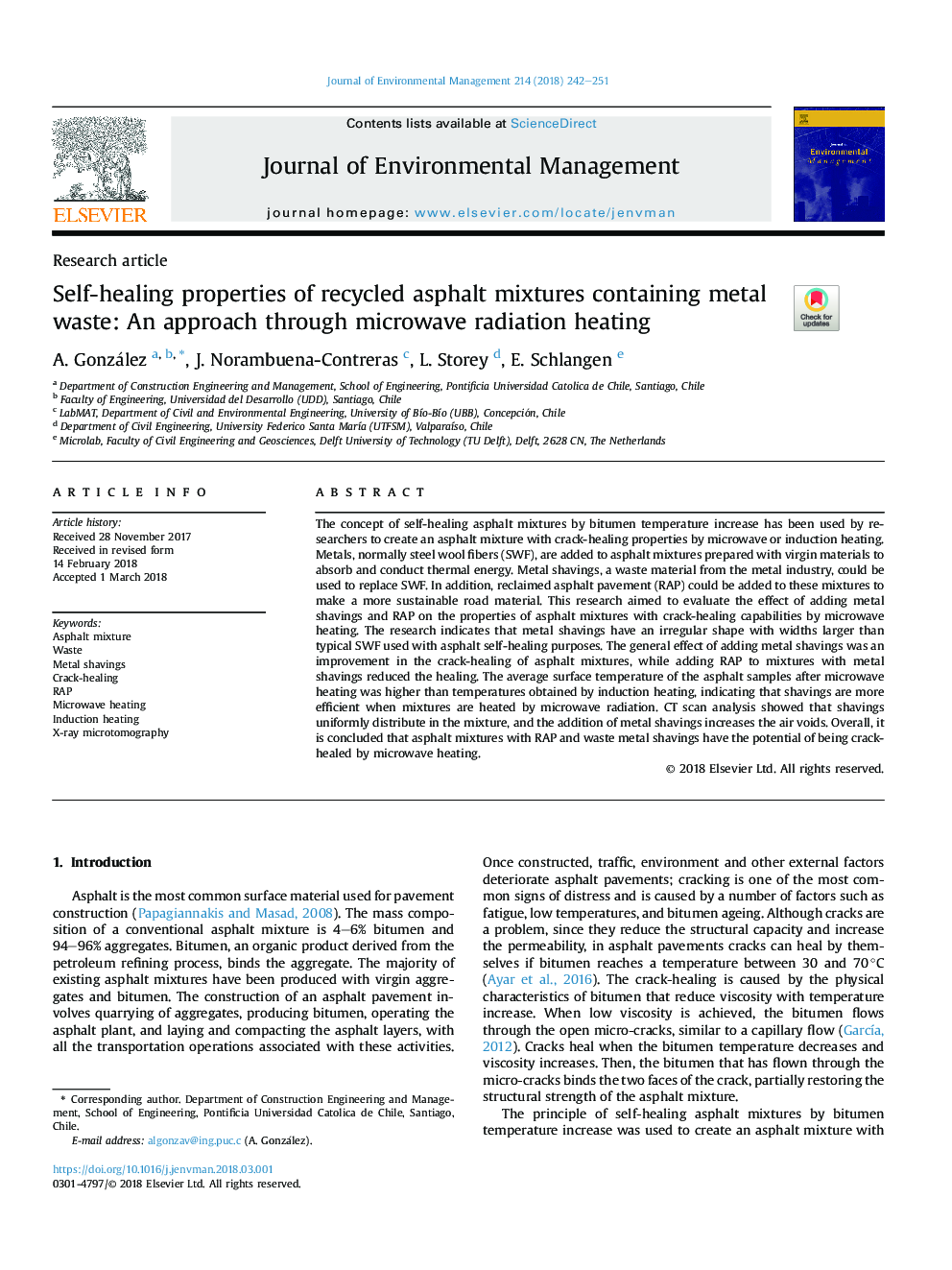| کد مقاله | کد نشریه | سال انتشار | مقاله انگلیسی | نسخه تمام متن |
|---|---|---|---|---|
| 7477692 | 1485204 | 2018 | 10 صفحه PDF | دانلود رایگان |
عنوان انگلیسی مقاله ISI
Self-healing properties of recycled asphalt mixtures containing metal waste: An approach through microwave radiation heating
ترجمه فارسی عنوان
خواص خودرا بهبود بخشیدن به مخلوط آسفالت بازیافتی که حاوی زباله های فلزی است: یک رویکرد از طریق گرم شدن تابش مایکروویو
دانلود مقاله + سفارش ترجمه
دانلود مقاله ISI انگلیسی
رایگان برای ایرانیان
کلمات کلیدی
موضوعات مرتبط
مهندسی و علوم پایه
مهندسی انرژی
انرژی های تجدید پذیر، توسعه پایدار و محیط زیست
چکیده انگلیسی
The concept of self-healing asphalt mixtures by bitumen temperature increase has been used by researchers to create an asphalt mixture with crack-healing properties by microwave or induction heating. Metals, normally steel wool fibers (SWF), are added to asphalt mixtures prepared with virgin materials to absorb and conduct thermal energy. Metal shavings, a waste material from the metal industry, could be used to replace SWF. In addition, reclaimed asphalt pavement (RAP) could be added to these mixtures to make a more sustainable road material. This research aimed to evaluate the effect of adding metal shavings and RAP on the properties of asphalt mixtures with crack-healing capabilities by microwave heating. The research indicates that metal shavings have an irregular shape with widths larger than typical SWF used with asphalt self-healing purposes. The general effect of adding metal shavings was an improvement in the crack-healing of asphalt mixtures, while adding RAP to mixtures with metal shavings reduced the healing. The average surface temperature of the asphalt samples after microwave heating was higher than temperatures obtained by induction heating, indicating that shavings are more efficient when mixtures are heated by microwave radiation. CT scan analysis showed that shavings uniformly distribute in the mixture, and the addition of metal shavings increases the air voids. Overall, it is concluded that asphalt mixtures with RAP and waste metal shavings have the potential of being crack-healed by microwave heating.
ناشر
Database: Elsevier - ScienceDirect (ساینس دایرکت)
Journal: Journal of Environmental Management - Volume 214, 15 May 2018, Pages 242-251
Journal: Journal of Environmental Management - Volume 214, 15 May 2018, Pages 242-251
نویسندگان
A. González, J. Norambuena-Contreras, L. Storey, E. Schlangen,
